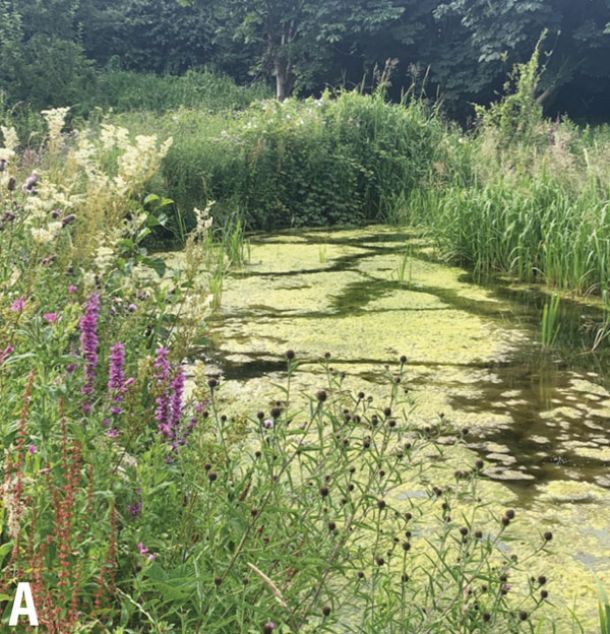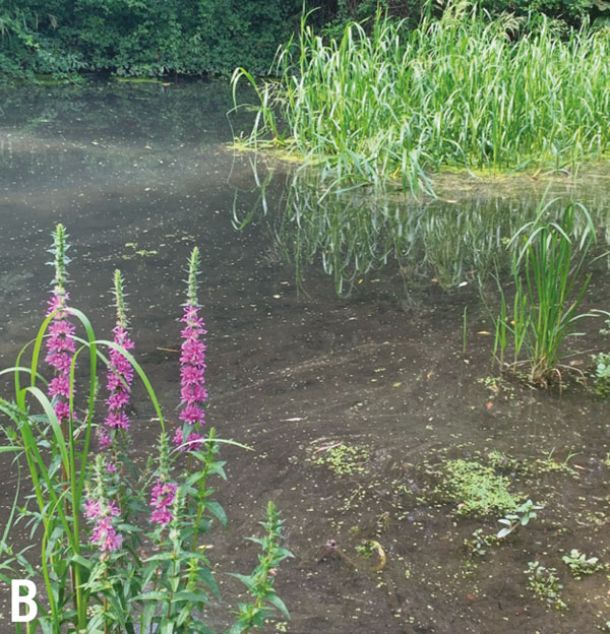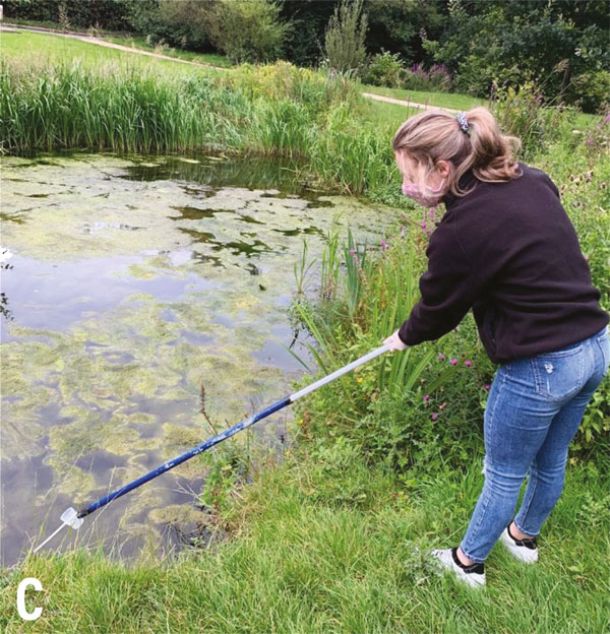Water quality and parasite contamination in public water amenities
In a follow-up to ‘Resident wild birds as potential disseminators of antimicrobial resistant bacteria’ (pages 316-319, Veterinary Ireland Journal, June 2022), this article reports on the work of a UCD research team (see panel, Contributors) which sampled two water bodies in the greater Dublin area to assess water quality and parasite contamination
Contributors
Shermin Shahriari, undergraduate veterinary medicine student, School of Veterinary Medicine, University College Dublin.
Dr Sandra Aungier, MVM PhD MRCVS. Lecturer in Veterinary Nursing, School of Veterinary Medicine, University College Dublin.
Dr Finola Leonard, MVB PhD MRCVS, Associate Professor, School of Veterinary Medicine, University College Dublin.
Chloe Maloney, undergraduate veterinary nursing student, School of Veterinary Medicine, University College Dublin.
Dr Mary Sekiya, PhD, Chief Technical Officer (Microbiology/Parasitology), School of Veterinary Medicine, University College Dublin.
Ms Amanda Lawlor, BAgrSc, Senior Technical Officer, School of Veterinary Medicine, University College Dublin.
Dr Sabine Harrison, PhD, Senior Technical Officer, School of Agriculture and Food Science, University College Dublin.
Dr Theo de Waal, BVSc PhD, MRCVS, Supervisor. Professor, School of Veterinary Medicine, University College Dublin
It is widely acknowledged that urbanisation, the industrial revolution, and poor waste disposal techniques have led to disposal of polluted sediments in water bodies such as rivers, estuaries, lakes, and oceans. Disposing of residential waste appropriately is thus crucial to preserving freshwater resources. Our water purification expenditure is increasing because of the chemicals and utilities required for a standard physio-chemical treatment. As a result, low-cost and energy-saving wastewater treatment is a necessity. Engineers and scientists are thus tasked with developing solutions that are technically, economically, and socially acceptable to properly dispose of such wastes.
Constructed wetlands (CW) are one of the most widely utilised technologies across the world as an additional polishing step to reduce the danger of untreated wastewater polluting recipient surface waters. CWs clean wastewater before releasing it into water bodies and they have gained popularity in recent years because of their ability to remove nutrients. The reed bed system, in particular, is said to be efficient, as well as economically and environmentally appealing and sustainable. Reed bed systems have been shown to be an effective method of removing pollutants from municipal wastewater.
Wetlands, according to a variety of studies, can greatly lower the overall nutrient load (particularly nitrogen and phosphorus), organic substances, pathogens, and heavy metals discharged from agricultural sources due to their high biological productivity. A riparian wetland system on the river Lambourn in Berkshire, England, for example, absorbed up to 85 per cent of total nitrogen and up to 70 per cent of total phosphorus from runoff.
Mechanism of action of wetlands
The basic concept of constructed wetlands is to emulate natural wetlands, which entail complicated physical and biochemical treatment by soil, plants, and microorganisms that reside in the plant rhizosphere. The primary component of the water remediation is the plant within the constructed wetland. They are often constructed with extensive reed beds of one or many plant species to filter suspended particles, nutrients, and trace elements. The type of macrophyte used has a significant impact on the efficiency and quality of the effluent. The selection of plant species for CW is influenced by geographical location, available area at the intended treatment site, and the nutrients and contaminants to be removed.
Wetland macrophyte species (such as reeds) offer a living environment for microorganisms, oxygenate the wastewater, supply nutrients for the microbes to survive, stabilise the soil, and contribute to nutrient reduction by taking nutrients and contaminants into their roots and rhizomes and then transporting them to their plant shoots. Ribadiya and Mehta (2014) further categorise the reed beds based on the type of the macrophytes, which are summarised in Table 1.
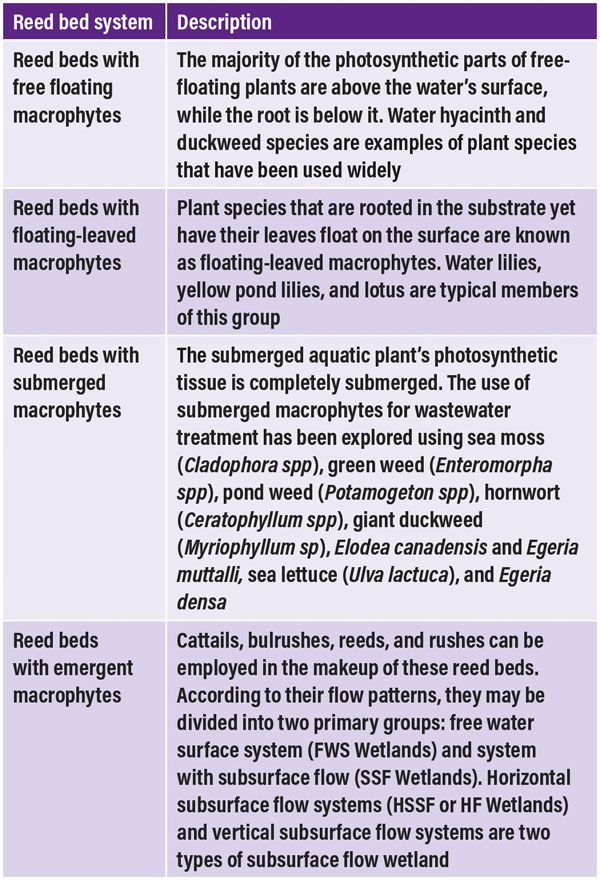
Table 1: Categories of reed bed systems and types of plants commonly used - from Ribadiya and Mehta (2014).
Waterborne infections
Parasitic waterborne infections, often due to improper wastewater disposal have been responsible for numerous disease outbreaks, posing a significant health concern across the world. Parasites associated with wastewater pose a significant risk to public health, owing to their environmentally persistent transmissive phases, low infectious dosage, and limited or temporarily acquired immunity, particularly in immunocompromised hosts. Exposure to wastewater irrigated crops, consumption of polluted water or exposure to polluted recreational water are all modes of transmission of parasitic illnesses. The protozoan parasites Cryptosporidium spp. and Giardia spp. are most commonly linked with diarrhoea that lasts seven to 10 days. It has been shown that waterborne transmission of Cryptosporidium oocysts and Giardia cysts occurs following ingestion of infective (oo)cysts, which are then excreted in the faeces of an infected human or animal. Cysts from human or animal faeces can reach surface water directly or by runoff from fields fertilised with manure or sewage sludge.
Our objective
In this pilot study, two water bodies in the greater Dublin area were sampled to assess the effectiveness of the reed bed filtering system, by analysing for a range of nutrients, metals, organic and inorganic materials. These waterbodies utilise a 'reed beds with emergent macrophytes' system, consisting primarily of Glyceria maxima (reed sweet grass) as the filtering component (Table 1). In addition, faecal samples from resident water birds were also collected and examined for the presence of Cryptosporidium, Giardia and Entamoeba.
Figure 1: Pre-filtration bed (A), post-filtration bed (B), waterbodies sampled. Chloe Maloney collecting a sample from pre-filtration bed (C).
MATERIALS AND METHODS
Water Quality Analysis
Samples from two waterbodies, namely, pre-filtration bed and post-filtration bed, were collected in 100ml sterile tubes weekly over a period of two weeks (Figure 1). Tap water served as a control.
Photometer MD 600 (Lovibond water testing) was used to measure the following parameters: urea, active oxygen, aluminium, fluoride, pH, total solids (TTS), total copper, ammonia, nitrate, nitrite, zinc, and calcium hardness. Each test was carried out according to the Lovibond Instruction manual.
Cryptosporidium spp, Giardia spp, and detection in bird faeces from the waterbodies
Faecal sampling:
Faecal samples from wild birds visiting these waterbodies were also collected. On three different occasions, birds were observed and when they defecated, the faeces was collected into a sterile tube (Faeces tube, Sarstedt) and stored at 4°C.
Detection of Cryptosporidium spp occysts:
A thin faecal smear was prepared from each sample and stained with Kinyoun’s acid fast stain. Slides were examined for the presence of Cryptosporidium oocysts microscopically (Olympus BH40) using the 100X objective lens, at least 30 fields were scanned on each slide.
Rapid antigen test for detection of Cryptosporidium spp, Giardia spp and Entamoeba hystolitica (sensu lato) in faecal samples
A rapid quick test (RIDA QUICK Cryptosporidium/Giardia/Entamoeba Comb) was used to detect Cryptosporidium, Giardia, and Entamoeba antigen in faecal samples, following the manufacturer’s instruction.
RESULTS
Water Quality Analysis Results
The first round of sampling was carried out at an ambient temperature of 15°C, with moderate rainfall overnight and on the day of sample collection. The second round of sampling was carried out at ambient temperature of 17°C, with moderate rainfall overnight and on the day of sample collection. All the water quality indicators were within the limits as defined in the EU regulations for surface water (S.I. No. 77/2019), except for copper, ammonia and zinc (Figure 2).
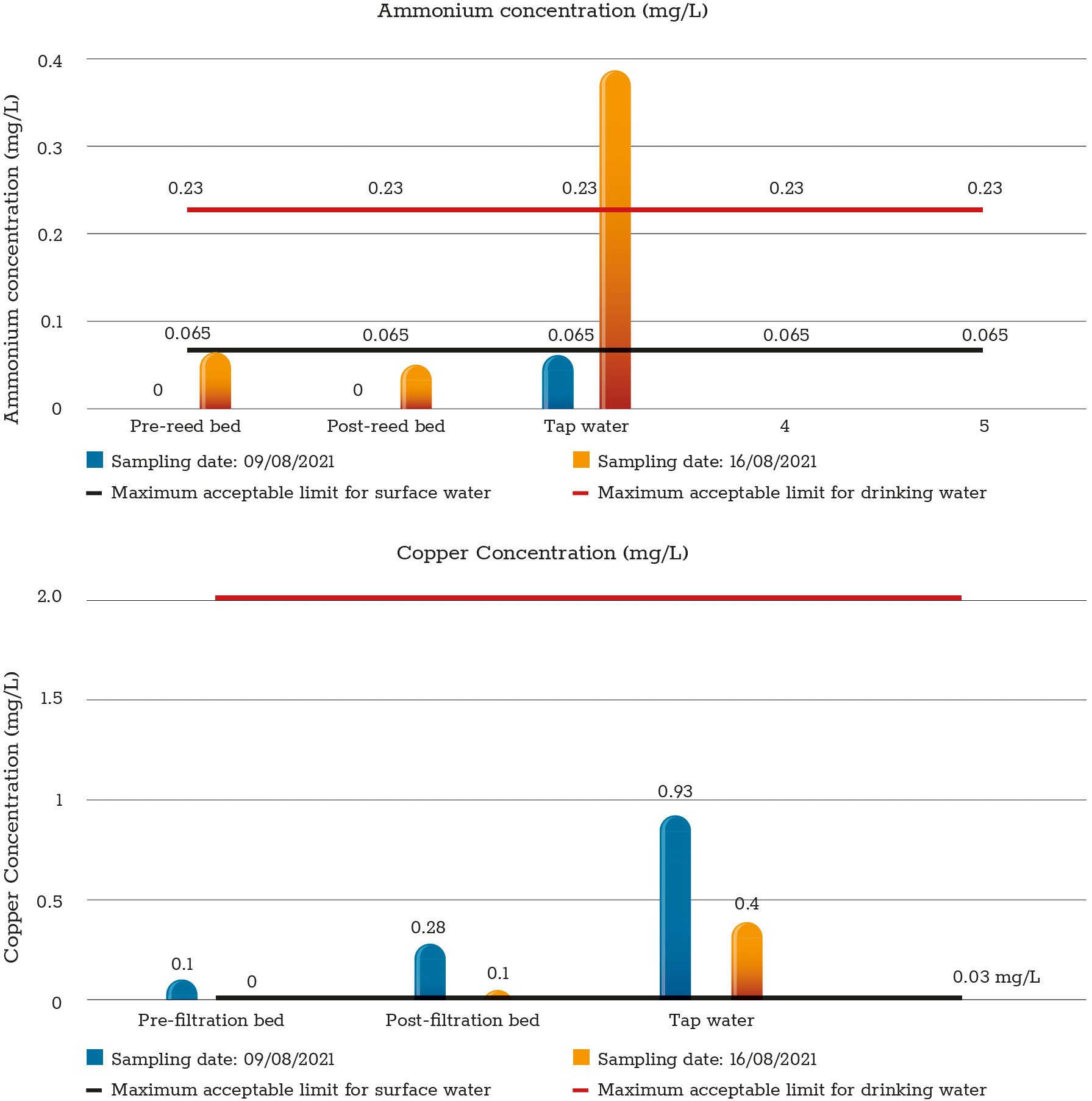
Figure 2: Water quality analysis results for ammonia and copper.
Faecal sampling results
Five faecal samples were collected from seagulls (B1-B4; D4), four from two mute swans (C2, C3, D1 and D2), and two from Mallard ducks (C1, C4). A further three samples (A, B, D3) from freshly deposited faeces surrounding the waterbody, were also collected, but the bird’s species could not be identified. The results are summarised in Table 2.
Discussion
All the parameters examined, except for ammonia, copper, and zinc, were within the permissible range for drinking water and surface water in pre-reed and post-reed beds (Figure 2). This data demonstrates that Glyceria maxima, the primary plant in the waterbody examined is efficient in improving water quality. The parameters in the pre-reed bed were already within the permissible range except for copper and ammonia.
In terms of copper, the concentration of copper exceeded the permissible surface water levels at all sample sites (Figure 2). Copper may be found in aquatic systems from both natural and human sources. Geological deposits, volcanic activity, and weathering and erosion of rocks and soils are all natural sources of copper in aquatic systems. At low quantities, copper is an important nutrient, but at larger concentrations, it is harmful to aquatic species. Aside from acute consequences like death, chronic copper exposure can have a negative impact on survival, development, and reproduction, as well as changes in brain function, enzyme activity, blood chemistry, and metabolism.
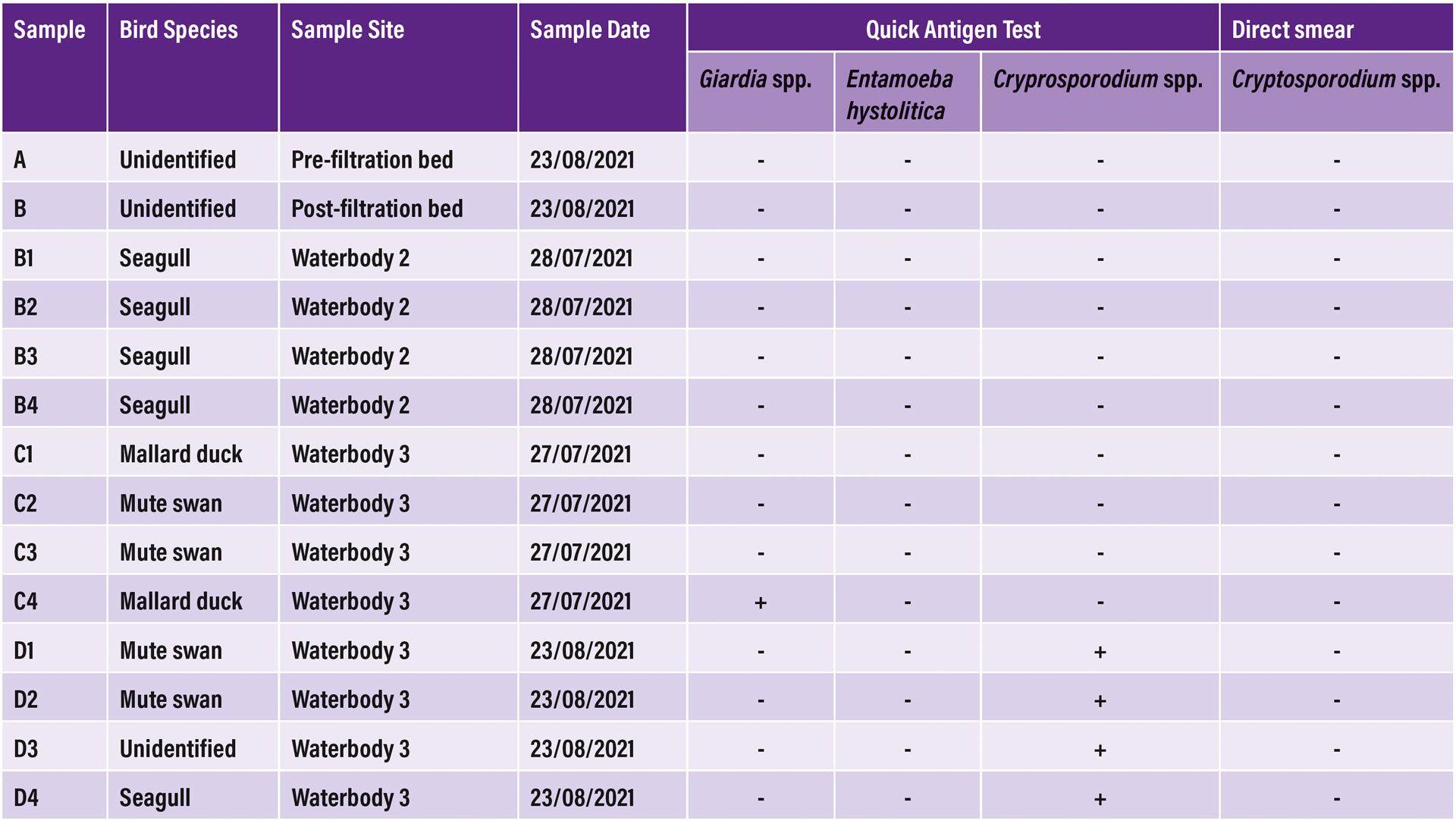
Table 2. Faecal sampling results for the Quick Antigen Test Kit.
Ammonium levels also exceeded the permissible surface water levels in the pre-reed bed during the second sampling event; however, it was within the permissible limit in the post-reed bed during both sampling events (Figure 2). The data also showed that ammonia concentrations in tap water were above the drinking water limit for the second sample event. In Ireland, disinfection of water for consumption is mainly by chlorination or, in some cases, by the addition of mono-chloramine. The latter is a chemical compound composed of chlorine and ammonia. It is likely that what the test kit detected was mono-chloramine.
The ammonium ion (NH4+) is an important nutrient for aquatic plants and animals. Most of the ammonia (NH3) in surface water is in the form of NH4+. Bacteria use ammonification to transform nitrogen from decaying plant, animal, and waste materials in soil and water to ammonia. Industrial waste, agricultural runoff, and sewage treatment effluent are all potential sources of organic matter for ammonification. Aquatic organisms have a high ammonia-nitrogen sensitivity, and eutrophication occurs when there is a high nitrogen load in the water. Ammonia-N has a lethal value of 0.44mg/L for fish. The presence of ammonia-N (NH4+–N) in excess of the permitted limit causes oxygen depletion, fish poisoning, and surface water eutrophication, water taste and odour degradation and harm to the human nerve system. Eutrophication causes an overgrowth of macrophytes or increased algal growth, resulting in green, turbid water. Excess nitrogen and phosphorus in water can cause an overgrowth of free-floating plants like duckweed and filamentous algae, resulting in dense layers of scum on the water’s surface. This can harm aquatic plants, fish, and other lake creatures by depriving them of oxygen and sunlight, which they require to thrive.
In tap water, the zinc levels were found to be within the normal limits for both sampling events (Figure 2). Interestingly, these same levels would be considered too high under the surface water regulations for zinc. In general, higher zinc concentration in tap water might be the consequence of zinc leaching from pipes and fittings. Significantly, high zinc levels can cause stomach cramps, nausea, and vomiting, as well as anaemia and pancreatic damage over time.
Both Giardia and Cryptosporidium infections were identified in the birds occupying the sample areas, which most likely results in water contamination with these parasites (Table 2). However, the direct smearing for Cryptosporidium oocysts was negative, which might be explained by the fact that oocysts shed intermittently, thus more frequent sampling events would be preferable.
Cryptosporidium may infect a wide range of vertebrate species, mostly residing in the hosts’ gastrointestinal tracts often resulting in diarrhoea. To date, five Cryptosporidium species, namely C. meleagridis, C. baileyi, C. galli, C. andersoni, and C. parvum, have been found in over 30 different wild bird species. C. meleagridis, which has also been identified in the small and large intestines of human patients, has been linked to enteritis and mortality, and is the third most prevalent Cryptosporidium species in people. Infections with C. baileyi have been recorded in a variety of avian hosts, including turkeys, ducks, geese, cockatiels, chickens, cormorants, and cranes. Unlike C. meleagridis and C. baileyi, C. galli’s life cycle stages develop in epithelial cells of the proventriculus rather than the intestines. Furthermore, C. galli infection is very host-specific. Other Cryptosporidium spp., such as C. parvum, have been identified in whooper swans (Cygnus cygnus) and migratory Canada geese (Branta canadensis) despite being mammal-specific.
Humans and wild animals have increasingly come into contact as the preservation of natural resources and wild species has advanced. This intimate contact allows parasites to move to new hosts. In addition, wild birds may serve as a source for Cryptosporidium infections in people. The Anatidae groups of birds had a prevalence of Cryptosporidium of 7.24 per cent, which was higher than the average rate in wild birds reported by Wang et al., (2021). According to their findings, C. parvum and C. baileyi were more common among whooper swans and ducks, and C. parvum oocysts have also been recorded in mute swans. Recently, there has been an increase in cryptosporidiosis outbreaks from recreational water. Because of the wide diversity of wild bird species and their near proximity to water supplies, greater emphasis is being given to the possibility that wild birds might be a possible source for the contamination of water sources with Cryptosporidium. A study of 467 faecal samples from migrating whooper swans showed eight positive for Cryptosporidium spp., including the zoonotic species C. parvum.
Likewise, Giardia spp. are zoonotic enteric protozoan parasites that may infect a wide variety of vertebrate hosts, including humans, mammals, and domestic and wild animals. They are also common among wild birds. This parasite has a large zoonotic reservoir, and cysts are widespread in water, where they may sustain infectivity for two months, and can be acquired by birds from this environment. Surveys of Giardia cyst in various surface waters show that 26 to 43 per cent of the surface waters were polluted with Giardia cysts at rates ranging from 0.3 to 100 cysts/100L. Giardia cysts have also been found in wild birds including Greyleg geese, Mallard ducks, Mute swans, and Carrion crows.
In conclusion, because the areas investigated in this pilot study are all public facilities frequently visited by people, children, and dogs, more epidemiological research is required to evaluate the public health impact of wild birds in Cryptosporidium and Giardia transmission.
References available on request.
















